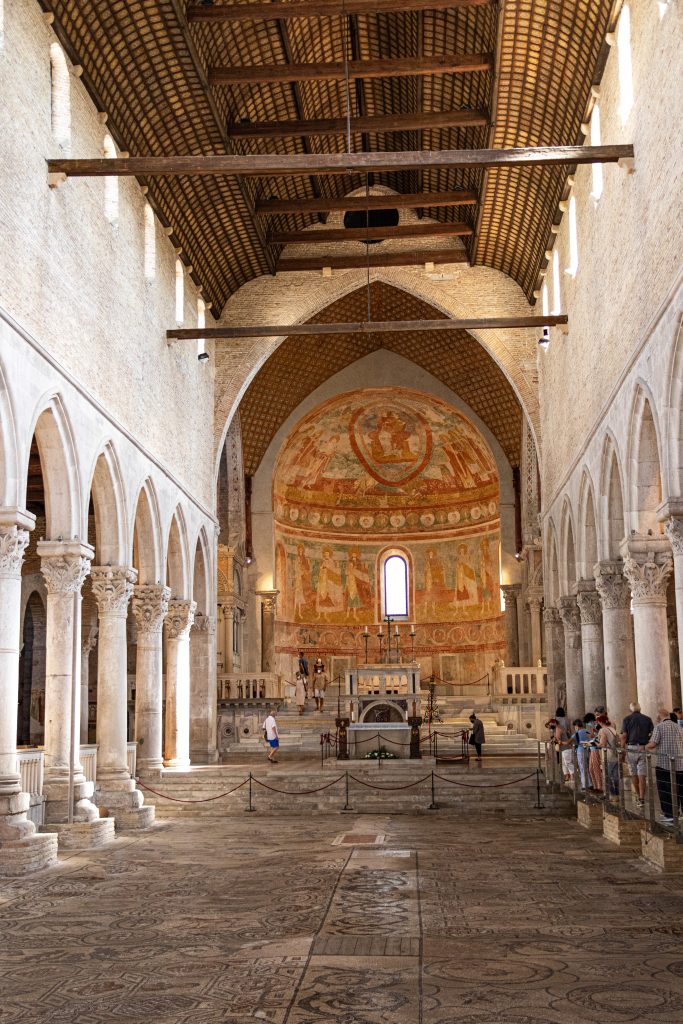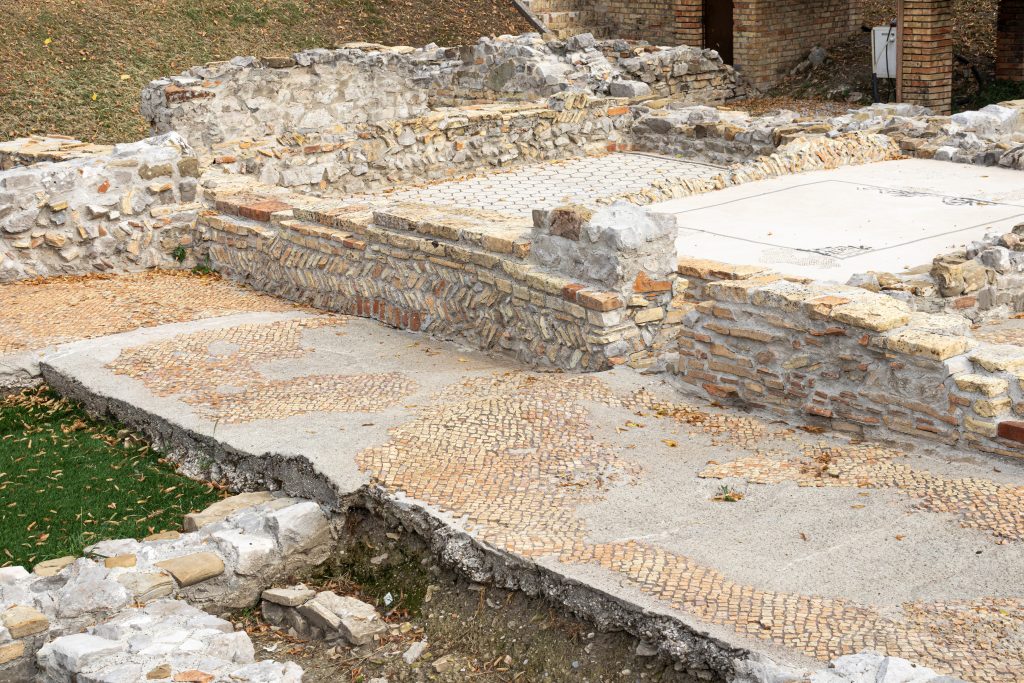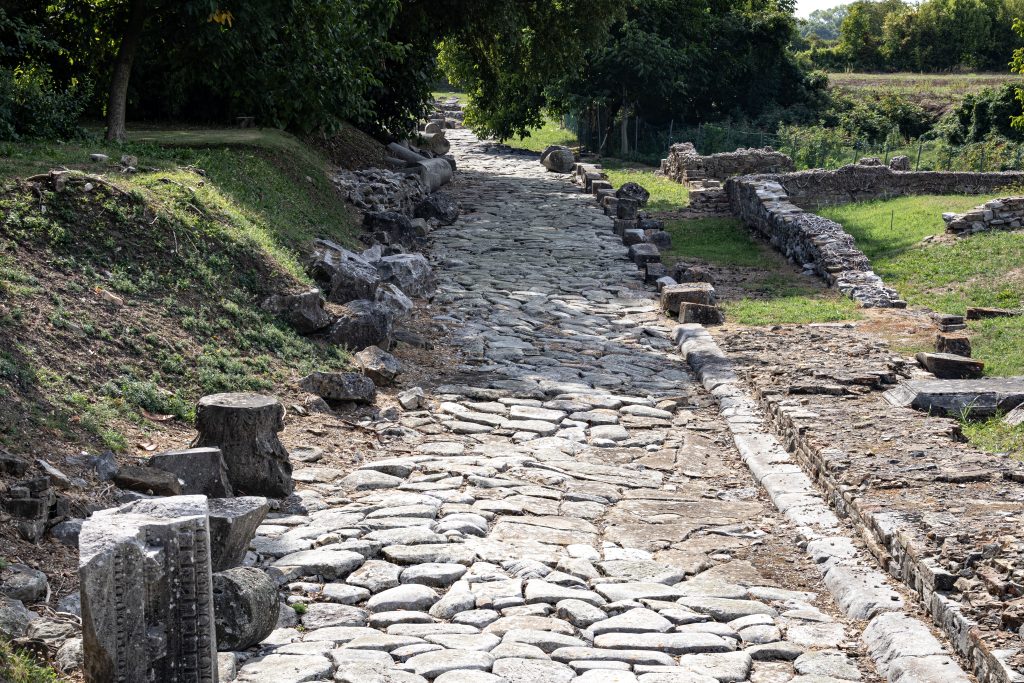words and photography: Victor Caneva
Surely, many beach-bound travelers on SR 352, eager to dip their toes in the Adriatic at the coastal resort of Grado, have passed right through the sleepy town of Aquileia, completely unaware of its fascinating history.

With roughly 3,500 inhabitants, this UNESCO World Heritage site preserves the legacy of one of the most glorious cities of the Roman Empire. In fact, far more Roman citizens arrived here to establish a new colony over two thousand years ago, drawn by extremely generous land grants, than there are current residents in this enigmatic Friulian settlement. You might say Aquileia is a quiet place (at least in the off-season), where one can hear history whispering loudly.

Led by a triumvirate of Roman nobles, around 3,000 families of Latin origin arrived at the marshy plain south of the Julian Alps and north of the Adriatic lagoons in 181 B.C., to found what would become Aquileia. The colony was established to halt the advance of warlike Alpine tribes, which had been making incursions into the Friulian lowlands, threatening Rome’s allies. With no roads connecting the settlement to other Roman strongholds, life in Aquileia’s early years was hard. In 169 B.C., a second triumvirate was dispatched with 1,500 additional Latin Roman settlers to strengthen the burgeoning community.
As roads began to reach Aquileia from Roman territory and engineering marvels like the Anfora and other canals improved the urban center, the colony started to flourish. In 89 B.C., Aquileia became a Roman municipality. Julius Caesar wintered in the city with his troops on multiple occasions, Octavian Augustus selected Aquileia as one of his residences, and Emperor Tiberius even had a son born there. Aquileia, strategically located to link the Italian Peninsula, Central Europe, and the Balkans by sea and road, grew in fame and fortune. With a state-of-the-art river port complex and ample access to building materials like white Aurisina limestone, it became one of the empire’s great cities.

At its zenith in the 2nd century A.D., Aquileia was a true metropolis, boasting a population of 100,000. The city had it all: an amphitheater, an imperial palace, opulent Roman villas, a mint, temples, an imposing forum, grand baths commissioned by Emperor Constantine, and, after the Edict of Milan legalized Christianity, a magnificent basilica. In the 3rd century, the esteemed poet Decimius Magnus Ausonius ranked Aquileia as the ninth greatest city in the world—but the world has a way of changing.
Aquileia’s prosperity made it a target for external powers. The Visigoths, under Alaric, attacked the then-capital of Venetia et Histria twice in the early 5th century. Then, on July 18, 452, Attila the Hun sacked Aquileia, leaving it devastated and nearly unrecognizable. The Roman inhabitants fled, establishing the cities of Venice and Grado.

Though Aquileia’s time as an influential Roman city had ended, its significance on the world stage persisted. Shortly after the Edict of Milan in 313, the ecclesiastical patriarchate overseen by the Bishop of Aquileia became strong, and even after the city fell, the patriarchate endured. By the 5th and 6th centuries, parts of modern-day Austria, Italy, Slovenia, and Croatia were under its ecclesiastic jurisdiction.
After centuries of invasions, schisms, theological controversies, political turmoil, and periodic relocations, in 1077, King Henry IV of Germany granted the Patriarchs of Aquileia temporal authority, allowing them to rule politically as well as ecclesiastically. The Patriarchate of Aquileia became a state, with the patriarchs ruling over Trieste, Friuli, Cadore, Styria, Carinthia, and central Istria at the height of their power. By the mid-15th century, however, after years of conflict, the patriarchate was defeated by the stronger Republic of Venice and ceased to exist as a political entity.
Walking silently along the cypress-lined banks of the Natissa waterway, gently flowing beside the ruins of Aquileia’s grand port, it’s hard to imagine the clamor that once arose from this very spot. Despite the tranquility, evidence of Aquileia’s past splendor is everywhere. Thanks to extensive excavations over the last two centuries, archaeologists have uncovered a staggering number of structures and artifacts that have enriched our understanding of this ancient city.

For those interested in exploring the Roman and early Christian heritage of Aquileia, the National Archaeological Museum and the Paleo-Christian Museum are must-see expositions, though they only scratch the surface of what Aquileia has to offer. Open-air ruins, Roman villas, a necropolis, and much more await the curious visitor.
Adorning the floor of Aquileia’s ancient basilica is around 750 square meters of intricate mosaics from the early 4th century, depicting the story of Jonah. Countless little stones, carefully placed by master artisans, converge to create a masterpiece that not only represents the artistic expression of a newly sanctioned religion but is also of sublime beauty. The mosaics in the adjoining hall, featuring assorted creatures and symbols, remain shockingly vibrant and detailed.

Visiting Aquileia is a surreal experience, where the calm of the present contrasts with the city’s momentous past and invites you to imagine the metropolis that once was. History whispers loudly in this modest Friulian town on the way to the beach, and those who listen will be richly rewarded.




























